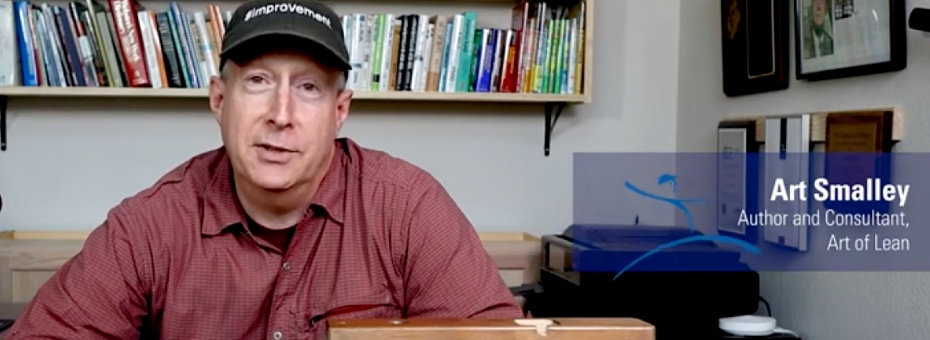Part one of eight. Watch the others:
- Part two, Overproduction
- Part three, Excess Inventory
- Part four, Excess Conveyance
- Part five, Motion
- Part six, Waiting
- Part seven, Defects
- Part eight, Processing
Hi everyone. This is Art Smalley, president of Art of Lean, Incorporated. Today, on behalf of the Lean Enterprise Institute, I have another short video clip for you. In the last video, we covered the concept of muda, mura, and muri, three forms of inefficiency that typically exists in any process. And today, we’re going to take a deeper dive into muda or waste. This will be a basic version, and I’ll have a more advanced version, with some criticism afterward. First, let’s go through the basics with one person, one machine, seven forms of waste. Stick around. I think you’ll enjoy it.
Let’s dive into the topic of waste a little bit. As I mentioned before, this is not a pure Toyota concept. You can find discussions about waste even in the writings of Henry Ford in the 1920s, for example. This specific concept came into Toyota in the 1950s, via the TWI Job Methods course. In that course, it had the phrase “elimination of unnecessary details,” and the framework E.C.R.S., which stands for Eliminate, Combine, Rearrange, and Simplify. Toyota took that framework and built upon it.
One of the ways they built upon it was this chart, which I’ll put up now. It shows at the center, motion. In the 50s, 60s, and 70s, we were primarily talking about human motion. But of course, it does apply to machine motion and other instances as well. Some of that work is a true value-add for the customer–what they pay for, value, and require–and then there are those wastes.
Within that waste, there’s a distinction between we call pure waste–the obvious and pure waste, which you want to go after first–and incidental waste, some of which is required in the short term, just due to the nature of the process. Like some movement is required, some transportation is required, some inventory is required, et cetera, et cetera. And here’s a pretty easy way to show that.
So, here we have a linkage, let’s call this a linkage, a plate with four holes in it, two bolts, and two nuts. And let’s say the requirement is that we tighten these nuts down. We assemble and tighten the nuts down on this linkage. Okay. I can be spinning this nut and tightening it down. It looks initially to be value-add, but in reality, only the last quarter turn of that nut, when we reach a specified torque, is value–what the customer requires.
Everything leading up to that is some form of waste. Now there’s the pure waste–the seven types we’ll talk about, which are the most egregious. But even in a good process, there’s incidental waste in the current state, at least, because I’m spinning the spinning and spinning this, tightening it down. But, you can argue that all those spins are also waste, incidental waste in the current process that cannot be eliminated, not easily. Then the final value-add is that last quarter turn.
You want to always look for this distinction between a type one and type two, the pure and the incidental. Pure waste is generally easier to go after first. After the first type of waste, the incidental waste sometimes is a little harder to identify in the current state. You either live with it for a while until you come with a better solution.
But you don’t have to live with, in this case, with the nut and bolt solution space; it could be welded, riveted, or snapped on somehow. And maybe those solutions are better and have less waste in them, but they also come at a cost, right? You have to weigh the cost and benefits of doing something like that.
So generally, there’s no reason you can’t go after the pure waste right away. Sometimes taking out the incidental waste takes a little bit longer, more thinking to justify and implement.
Still, first off, think about that intellectual distinction between motion and work, and then the types of value-add, pure waste, and incidental waste, which reside in every process. Watch the next video in this five part series.
Building a Lean Operating and Management System
Gain the in-depth understanding of lean principles, thinking, and practices.






